P=have O=don’t have it
The
Chinese
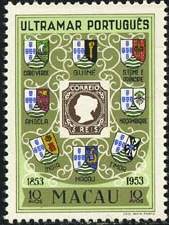
Scott: #371P
Issued: 9.3.1954
Centenary of Portuguese Stamps
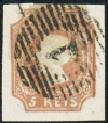 Inside
#371:
Inside
#371:
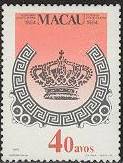
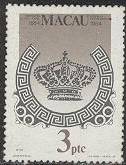
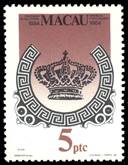
Scott: #486-8O
Issued: 1.3.1984
Centenary of
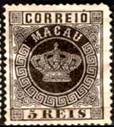 Inside
#486-8:
Inside
#486-8:
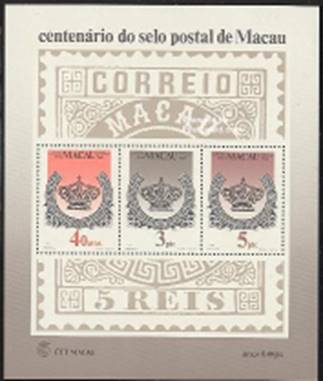
Scott: #488aO
(Thanks to Zhang for the scan)
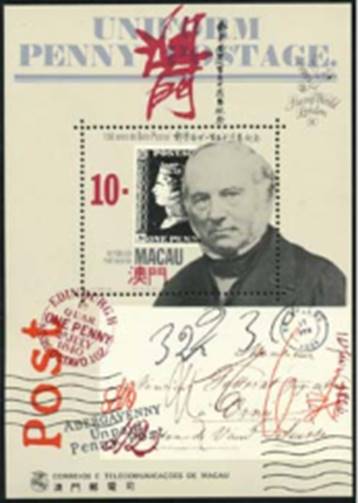
Scott: #616O
Issued: 3.5.1990
150th Anniversary, Penny Black
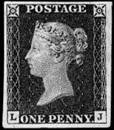 Inside
#616: G.B. #1
Inside
#616: G.B. #1
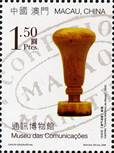
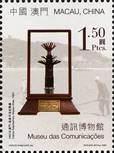

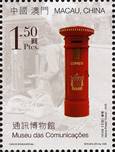
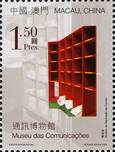
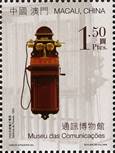
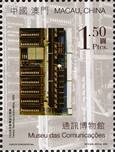
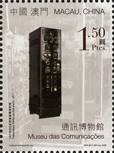
Scott: #1192a-hO
Issued: 18.5.2006
Museums and their Collections II -
Inside #1192e: Stamps on Envelopes
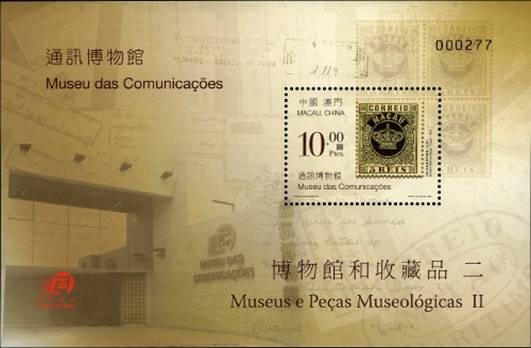
Scott: #1193O
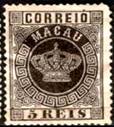 Inside #1193:
Inside #1193:
Thanks to Lou
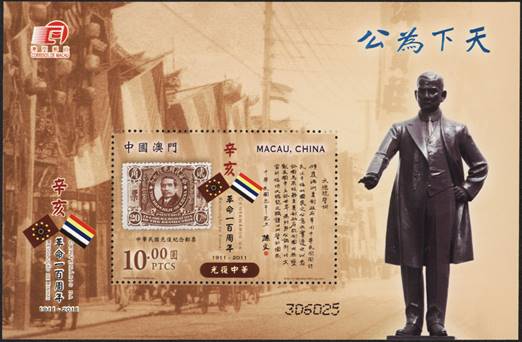
Scott: #1350P
Issued: 10.10.2011
100th Anniversary, Xinhai Revolution
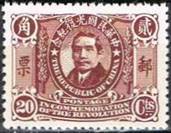 Inside #1350: China #185O
Inside #1350: China #185O
Centenary of Xinhai
Revolution
Under
the leading of Sun Yat-sen. a revelatory pioneer of Chinese people. Qing
Dynasty ruled
In
order to celebrate the Centenary of Xinhai Revolution, Macao Post issues four
commemorative stamps and one souvenir sheet. The themes on the four stamps are
“Revolutionary Preparation”, “Permanent Heroism”, “Wuchang Uprising” and
“Foundation of the Republic of China” respectively and the theme on the
souvenir sheet is “Recovery of China”.
Revolutionary
Preparation: After a long term gestation and
preparation, Xintiai Revolution took Hong Kong and
Gao
Jianfu (1879 1951), one of the founders of Lingnan Chinese Painting. He served
as Chairman with the Chinese Revolutionary League (Tongmenghui) of Guangdong
Branch, and he established the League of Macao Branch in 1911 at No.41,
Permanent Heroism: The
martyrs who joined the Huanghuagang Uprising in
Huang
Xing (1874 - 1916), genealogical name: Keqiang. He launched the Huanghuagang
Uprising in
Wuchang Uprising: Gate
of Wuchang Uprising is lhe place where the first gua was triggered off the
Wuchang Uprising and the ancient city tower named Harmony Gate (Zhonghe Men)
was renamed as Uprising Gate (Qiyi Men).
Xiong
Bitigkun (1885 - 1969), from
Foundation of
Sun
Yat-sen (Sun Zhongshan) (1866 - 1925), big name: Wen, genealogical name:
Deining, baptized name: Rixin. Japanese name: Nakayarna Sho.
Though
he served as President for 91 days only, he established and issued more than 30
governmental decrees which would be beneficial to the development of democratic
politics, national capital and cultural education and he was worth to be the
pioneer of bourgeois revolution and a great revolutionist of democratic
revolutionary.
Recovery of China: Suit
Yat-sen attached great importance to the design of stamps when serving as
Provisional President, and called Chengyu, Secretary of Traffic Department and
Tang Wenqi of Commissioner of Posts and Telecommunications Department and so on
to make careful study on the design of commemorative stamps for national
foundation and determined to terminate the datemark of “Heavenly Stems” and
“Earthly Branches”, and adopt the postal datemark of the Republic of China. In
late 1912, the commemorative stamps of recovery and republic carrying design of
head portrait of Sun Yat-sen and Yuan Shikai was published respectively.
Sun
Yat-sen liked writing “The world belongs to the public” as gift. The phrase was
abstracted out of “Liji - Liyun”: “A public spirit will rule all under the sky
when the great way prevails”, Mr. Sun Yat-sen thought: “Equality and freedom
are rights of citizens, however officeholders shall be public servants for the
citizens”. He swore before serving as Provisional President: “Solidify the
Republic of China, create happiness for the people, which are what the people
want, I should abide by the tenet, loyal to my country and serve the people”.
Sun Yat-sen introduced the concepts of “serve the people” and “public servant”
to
On
10 January 1912, the Provisional Senate passed a special decision to adopt the
Five-Colored Republic Flag (or Five-Colored Flag) as national flag, which means
a Republic for nationalities as Han, Manchus, Mongols, Hui and Tibetan.
The
Eighteen-Star Flag, the full name is Blood Eighteen-Star Flag. it was a flag declared for the establishment of Hubei
Military Government after Wuchang Uprising. ln the second day of Wuchang
uprising, the Military Government planned to declare the foundation of the
Republic of China with the Blood Flag as revolutionary flag. On May 1921, after
Sun acceded to Extraordinary President, he declared to abolish the Five-Colored
Flag and Blood Flag and replace them with a flag of “Blue Sky with a White
Sun”.
http://macaustamps.blogspot.com/2011/10/centenary-of-xinhai-revolution.html
Thanks to Zhang
![]()
Wish List
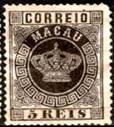
Macao #1
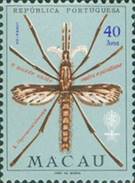
Macau #400 for Guinea Bissau
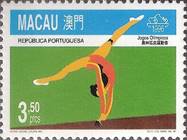
Macau #831 for Togo
